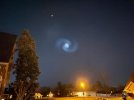The 2022 AE1 impact on Earth could occur on July 4, 2023, but is estimated at 1 in 1700.
The "selfie" of the Orion spacecraft with the Earth: the single shot from the last Apollo mission 50 years ago - The Times Hub
Spread the love The perfect moment during the flight Cameras aboard the unmanned spacecraft Orion […]
 thetimeshub.in
thetimeshub.in
In early January, astronomers from the Mount Lemmon Observatory in Arizona discovered the asteroid 2022 AE1, which has the highest risk of impact with the Earth among all known near-Earth objects. Data on the space body are given on the website of the Center for the Study of Near-Earth Objects (CNEOS) of the Jet Propulsion Laboratory (JPL) NASA.
Asteroid 2022 AE1 can be compared to a hypothetical Tunguska meteorite – its size is about 70 meters. The object is moving at a speed of 19.83 kilometers per second.
Currently, the asteroid has received one point on the Turin hazard scale, which is determined based on the mathematical probability of a collision and the kinetic energy of a collision from zero (in the case when the probability of a collision below observational error) to ten (when impact is imminent).
A potential 2022 AE1 impact on Earth is possible on July 4, 2023 and is estimated at one in 1700.

Photo: ssd.jpl. nasa.gov
The orbit of asteroid 2022 AE1 on 19.01 2022
It was previously reported that NASA launched the first spacecraft to deliberately the purpose of changing its orbit.




